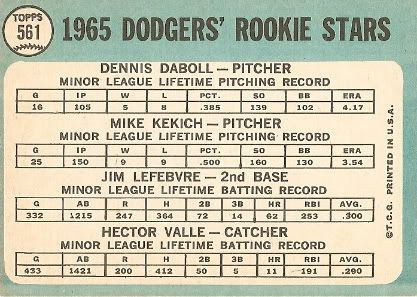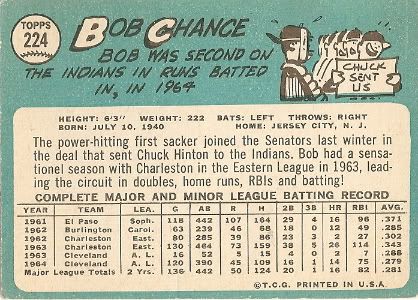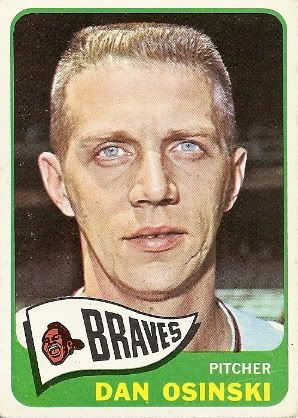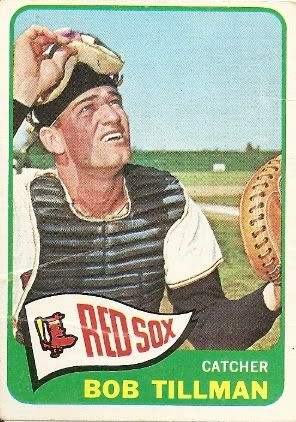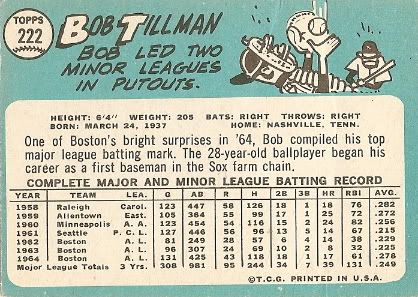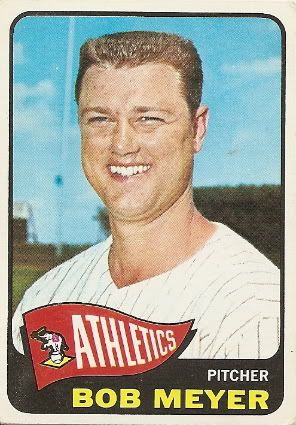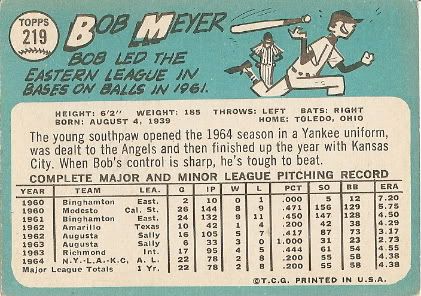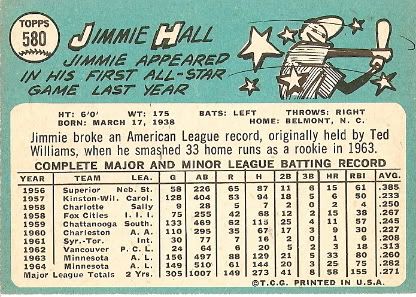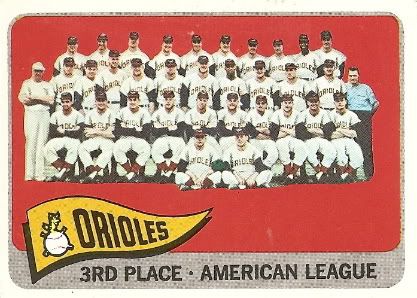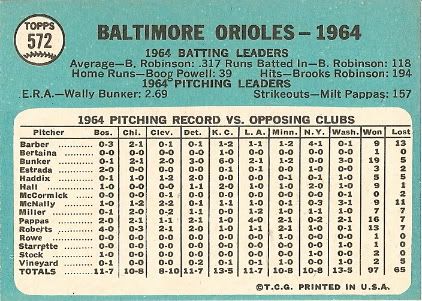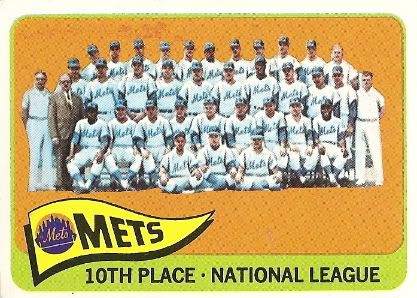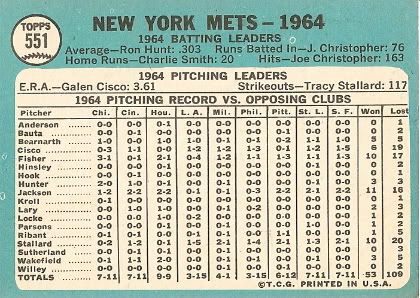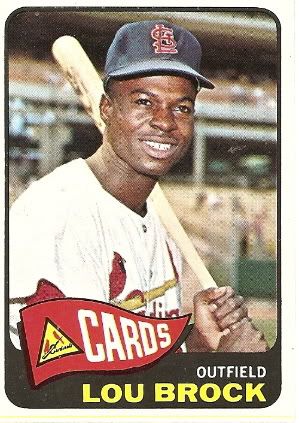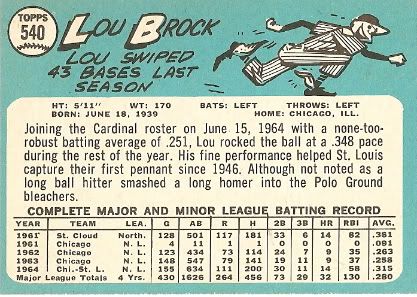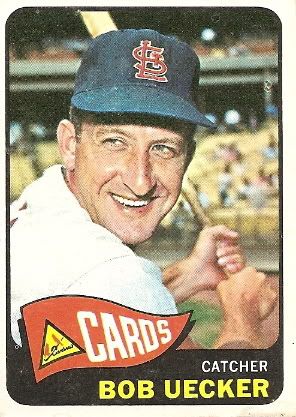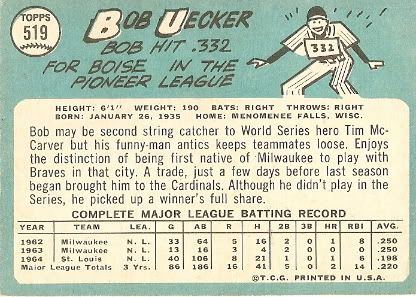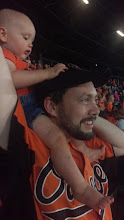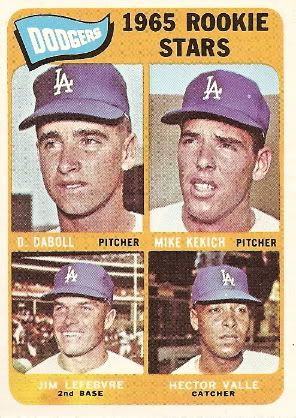
Wow, check out the Brady Bunch action on this four-player rookie card! If I were Lefebvre or Valle, I think I'd be a little miffed about getting smaller photos than the other two. Of course, it's an honor just to be featured on a baseball card, blah blah blah.
Fun facts about Dennis Daboll:-Dennis, who called Las Vegas, NV home in his youth, signed with the Dodgers out of high school in 1964.
-He went 5-8 with a 4.17 ERA between Rookie-level Pocatello and A-level Santa Barbara in his first pro season, but seemed likely to make the big league club in 1965, according to this
Sports Illustrated article.
-In May 1965, the Reds claimed Daboll off of waivers from Los Angeles and assigned him to class A Tampa, where he spent the next two seasons. He pitched well, but not outstandingly so (13-16, 3.66 ERA).
-Dennis moved on to the Cardinals farm system in 1967, and stayed there through 1971. He never climbed higher than AA, and peaked with an 11-6 record and 1.66 ERA in three stops in 1970. He was only 24 when he stopped pitching in organized baseball.
Fun facts about Mike Kekich:-A native of San Diego, CA, Mike also signed with the Dodgers in 1964.
-He debuted with Los Angeles in 1965 at age 20, but pitched poorly in five games and did not resurface in the majors until 1968.
-His only career shutout was a one-hit, 11-strikeout masterpiece on
August 4, 1968, as the Dodgers bested the Mets 2-0. Only a
Ron Swoboda single with two outs in the seventh inning kept him from a piece of history.
-After a hard-luck rookie season (2-10 with a 3.91 ERA), Mike was dealt to the Yankees.
-New York used him in both relieving and starting roles during his four-plus seasons with the club. His earned run average was a pedestrian 4.31 during this time, but he did win 31 games in the Bronx.
-In 1973, Kekich famously "swapped families" (wives, kids, and dogs) with Yankees teammate
Fritz Peterson! Peterson went on to marry Kekich's former wife Susanne and they had four children of their own, but his ex-wife Marilyn got cold feet and did not stay with Kekich.
-Months after the family trade, Mike was traded as well, this time to Cleveland. A rocky finish to the 1973 season led to his release the following Spring. He split 1974 between Japan and the Rangers' AAA Spokane team. His best effort as a major leaguer came in a partial season in 1975 with Texas (3.73 ERA in 23 relief appearances).
-He continued to bounce around, going to Mexico for 1976 only to return to the bigs with the new Seattle club in 1977. He went 5-4 with a 5.60 ERA for the Mariners in what proved to be his final big league season (he spent 1978 back in the minors). In parts of nine years in the majors he was 39-51 with a 4.59 ERA.
-Mike allowed only four hits in 20 career at-bats (.200 AVG) to Hall of Famer
Rod Carew.
-Kekich finally did remarry and currently lives in New Mexico, where he works as an insurance adjuster.
Fun facts about Jim Lefebvre:-Hailing from Inglewood, CA, Jim signed with the Dodgers in 1962.
-Commanded attention in his first pro season, hitting .327 with a .432 on-base percentage, .619 slugging percentage, 33 doubles, 39 home runs, and 130 RBI at class C Reno.
-Cracked the Dodgers starting lineup at the beginning of the 1965 season, combining with
Wes Parker,
Maury Wills, and
Jim Gilliam to form an all-switch-hitting infield. Jim hit .250 but walked 71 times, cracked 21 doubles, and led the club with 12 home runs. His 69 RBI were one off the team lead, and his performance was strong enough to beat out fellow second baseman
Joe Morgan for N.L. Rookie of the Year honors.
-Hit .400 (4-for-10) in three games in the 1965 World Series, an L.A. win over the Twins. The following year he was just 2-for-12 as the Dodgers were swept by the Orioles, but his solo home run in Game One provided one of just two runs that his team scored in the entire Fall Classic.
-Was an All-Star in 1966, as he paced his club in home runs and RBI with 24 and 74 and hit a career-high .274.
-His power dissipated after that, but he remained a role player for the Dodgers until leaving for Japan after the 1972 season. In eight seasons in the majors he hit .251 with 74 homers and 404 RBI.
-Took advantage of his time in Los Angeles, making guest appearances on popular shows such as
Gilligan's Island and
Batman.
-Played in Japan with the Lotte Orions from 1973-1976. In 1974 he became the first man to play for both a World Series champ and a Japan Series champ. Despite hitting 29 homers during his first year with the club, he battled both injuries and his manager in later years.
-Has been on several major league coaching staffs, including the Dodgers, Giants, Athletics, Brewers, and Reds.
-Managed the Mariners from 1989-1991. Despite bringing Seattle its first winning team in 1991 (83-79), he was not retained. Spent the next two seasons managing the Cubs, and was again let go despite modest gains on the field. Also served as Milwaukee's interim manager in 1999. Spent six years (2003-2008) managing the Chinese team in international competition. Though China won only a single game in the 2008 Olympics, it was a stunning upset of Taiwan.
Fun facts about Hector Valle:-Hector was born in Vega Baja, Puerto Rico, and signed with the Dodgers in 1960.
-His best season in the minors was 1961, when he hit .325 with a .401 on-base percentage and 71 RBI at class C Reno.
-In 1965, his sixth pro season, the Dodgers called the 25-year-old catcher up to the big leagues at midseason. His entire MLB career consisted of nine games: six in June and one each in July, September, and October.
-He was the starting catcher in L.A.’s final game of the season, a 3-0 win over the Braves. Six Dodger pitchers combined on a three-hitter, and Valle had two singles and an RBI.
-Overall, Hector was 4-for-13 (.308) with one run scored and two RBI. Behind the plate, he handled 21 chances without an error.
-He played minor league ball through the 1971 season, also passing through the Mets, Tigers, and Royals organizations. He also played several years in the Puerto Rican Winter Baseball League.
